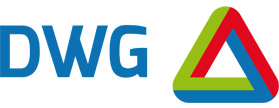Attero is an environmental company that operates nationally and internationally. For more than 90 years, Attero has specialised in recovering and reusing energy and raw materials from waste. The organisation is built around ‘powerful waste management companies’ and is the market leader in the Netherlands.
The waste-to-energy plants in Moerdijk, Wijster and Groningen process residual waste to produce energy. Half of the residual waste brought in for disposal each year goes into this process. Attero sees incinerating residual waste as both valuable and responsible. This approach generates sustainable energy in the form of heat and/or power. The really cool thing is that half of the waste is disposed of in a carbon-neutral manner! No fossil resources such as oil, coal or gas need to be mined or extracted to produce the heat and energy. Alongside wind energy, energy from waste has been the largest source of sustainable energy in our country for years.
E&I and IT! Want to find out more?
DWG’s E&I and IT departments are involved in a prestigious and challenging engineering assignment at Attero. We have put a lot of effort into simplifying the processes. Want to find out more? Read on for details of how DWG has tackled three issues.
Replacement of fluid storage tanks
Tanks are used in the fluid treatment process at the factory. That treatment ultimately leads to the delivery of a clean residual product. These tanks are used frequently every day, so the fact that some needed replacement was hardly surprising. How did we handle this with Attero? The planned plant shutdown was an opportunity to replace some tanks.
That may sound simple on paper, but you’ll understand our challenges better when we go into the details later. To make this possible, our engineer focused on a number of aspects:
- Based on the tanks due for replacement, DWG analysed what equipment needed to be replaced in the systems around each tank;
- DWG produced the drawings and formulated a plan of action, and
- DWG prepared and finalised work packages to make sure that the right items were demolished.
Obviously, we only started to refer to a new situation when it was clear where the new tanks could be located in the installation and connected up. All the liquids are now flowing smoothly again.
The engineering work was carried out using Siemens’ COMOS plant engineering software. We were able to use all our expertise in and experience with Siemens’ products and software. After the engineering work had been completed, the new items of plant were installed and commissioned. Our engineer was also closely involved in this phase. A key benefit of having our engineer present was that expert knowledge of the conversion was immediately available, leading to pleasant and fast cooperation.
Merging databases makes sense
Technicians don’t combine databases; we ‘merge’ them. We updated the existing database for the customer and merged 2 other installations with the existing database. Avoiding data loss is the most important aspect in processes like this. This means that you have to adopt a controlled approach. So how did we handle this task? Duplicate data was removed from the database. Anomalies were assessed individually to determine the proper course of action. DWG has COMOS specialists in-house and this allows us to perform the tasks efficiently while minimising risk for the customer. The result? The customer can now edit and update engineering documents such as P&IDs, wiring diagrams, loop diagrams and the like in COMOS. New parts of the installation have now been integrated directly in COMOS through the database merge. So the system is completely up-to-date!
A link for: ‘immediate information’
COMOS from Siemens is the tool where documentation provided by the engineers is maintained. Meridian is the perfect tool for making documents available to users. There is always a need to reference documentation, after all, everyone uses installation documentation: operators, maintenance technicians and, of course, the engineers. Ideally, you need to make sure that the right information is available before you get these professionals involved. The goal here is to efficiently create an up-to-date overview that can be accessed by those involved at all times. DWG has automated the transfer of information from COMOS to Meridian. Hey presto: speed and a clear overview at all times, and, even more importantly, meaningful information. What if you need to edit documents in COMOS? No problem! As soon as a document has been finalised in COMOS, everything is available to the professionals involved at the right time. All the important information (metadata) is included, checked and reviewed in the process.
Interested in a meeting? We'll be happy to oblige!
Are you looking for software or hardware specialists? Or a consultant who takes the time to help you get to the bottom of your issues? We would love to hear your story! Simply contact us for a productive meeting over coffee.



